Flowers, passion, a dowry and its sheath
Here is how this piece of furniture appeared in Auvergne in the 18th century.
Prelude to the wedding, the engagement makes it possible to organize as it should, the imminent arrival of the bride in the family of the groom, under the condition of a dowry made at least of a piece of furniture containing the entirety of her trousseau.
The father of the bride orders from the itinerant carpenter in furniture, a chest both robust and delicate in which his daughter can “lock” her laundry and take it to her new home.
So that his personal effects, even once the chest is filled to the brim, are not crumpled, the planks of the lid are maintained on a curved crosspiece using large forged nails, which gives its rounded shape to the top.
According to the Auvergne tradition, this chest is made of thick oak planks. This robust structure ensures its solidity and longevity.
In the same time, the ornamentation is full of finesse. The facade is decorated with flowers, symbol of the Passion, framed by a succession of fingernail stroke pattern.
The flower of the middle panel is further set with a diamond-shaped frame.
Fleur de lys et moraillon
As a highlight, the “serrure à bosse” (literally bump lock) is quite remarkable. The “moraillon” (hasp) that supports the “auberon” (catch of the lock), this loop in which the bolt engages when you turn the key in the lock, this hasp therefore has a very pretty ending in fleur-de-lys, attesting to family loyalty to the Kings of France.
Reference: [MP028]
Dimensions
Width: 114cm, height: 85cm, depth: 57cm.
Coffres
- All
- 15ᵗʰ century
- 17ᵗʰ century
- 18ᵗʰ century
- Aquitaine
- Béarnais
- Bordelais
- Castle furniture
- Chestnut
- China
- Country furniture
- France
- Furnitures
- Haute-Loire
- High Middle Ages
- Île de France
- Knight Chest
- Louis XIII
- Metal
- Oak
- Périgord
- Period furniture
- Popular art furniture
- Provincial art
- Renaissance
- Small furniture
- South West of France
- Stagecoach travel trunk
- The treasure corner
- Travel trunk
- Trunk
- Types of furniture
- Walnut
- Wedding trunk
- Wood species

![Oak wedding chest – 18th century – Auvergne – [MP028]](https://www.aux-rois-louis.com/wp-content/uploads/2022/03/MP028_705x900-900x450.jpg)
![MP028_705x900 Oak wedding chest – 18th century – Auvergne – [MP028]](https://www.aux-rois-louis.com/wp-content/uploads/2022/03/MP028_705x900.jpg)
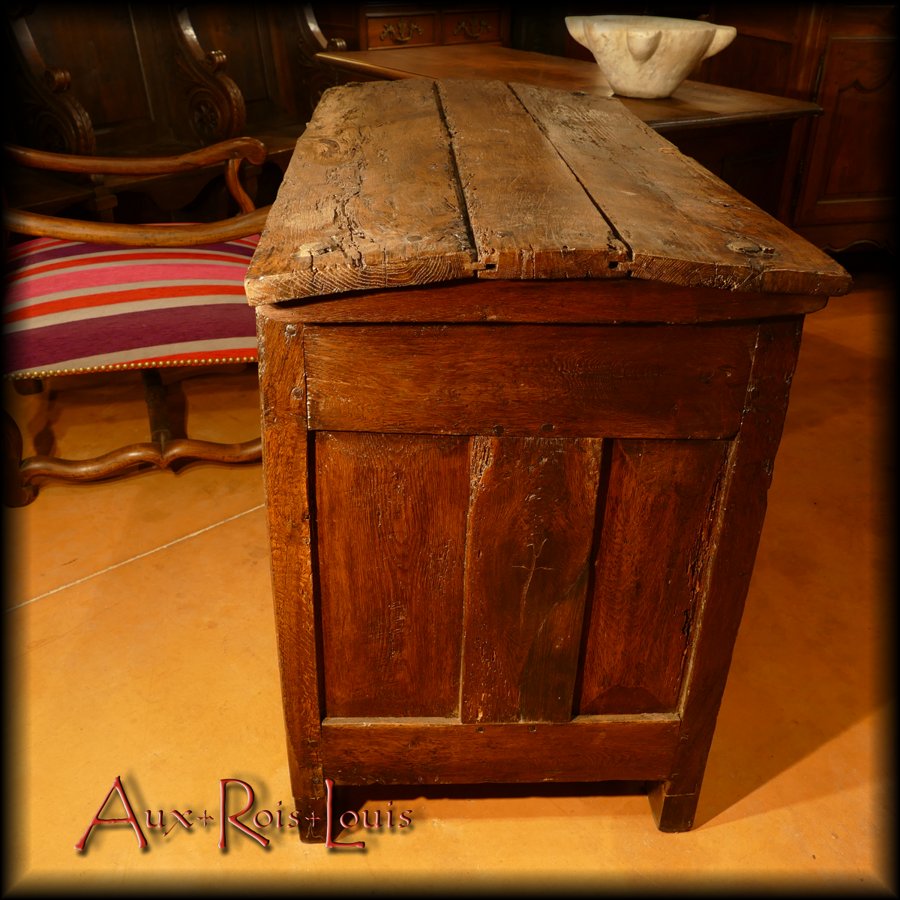
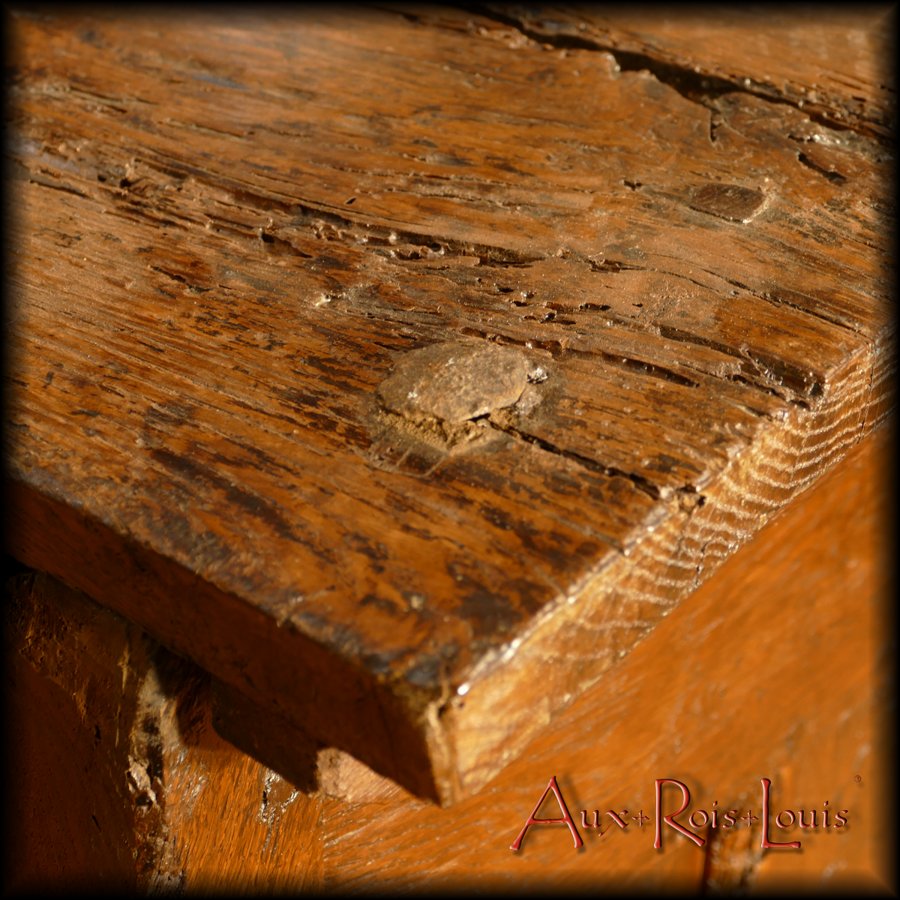
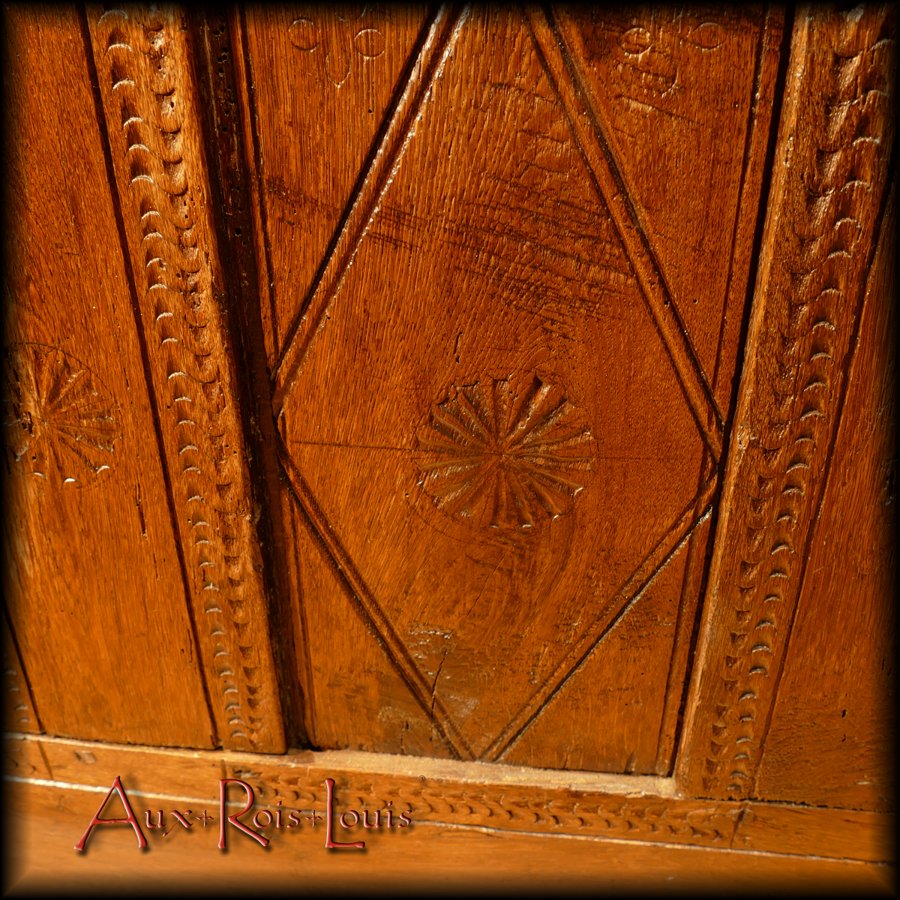
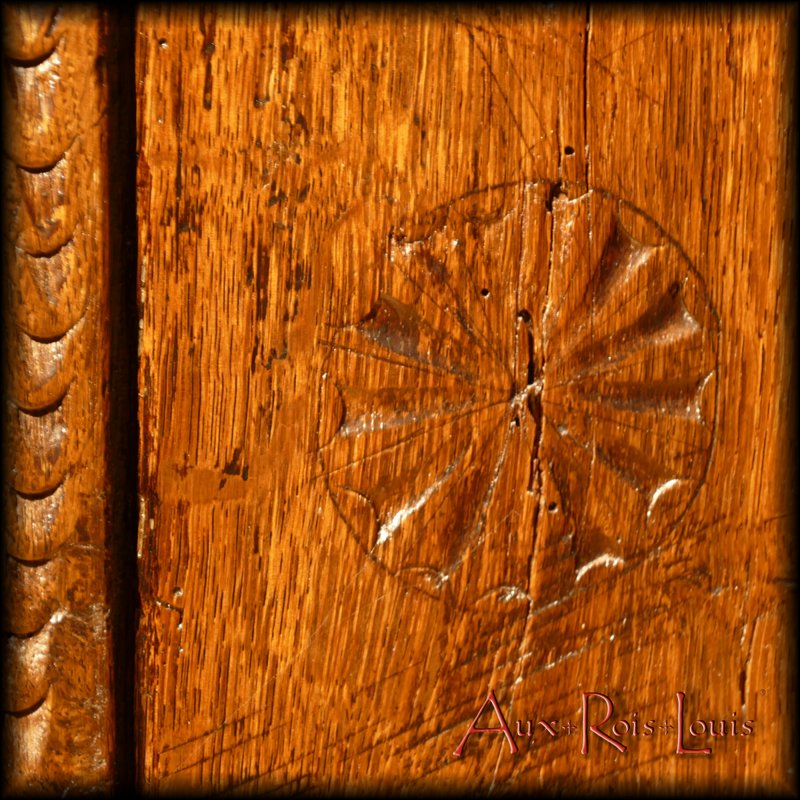
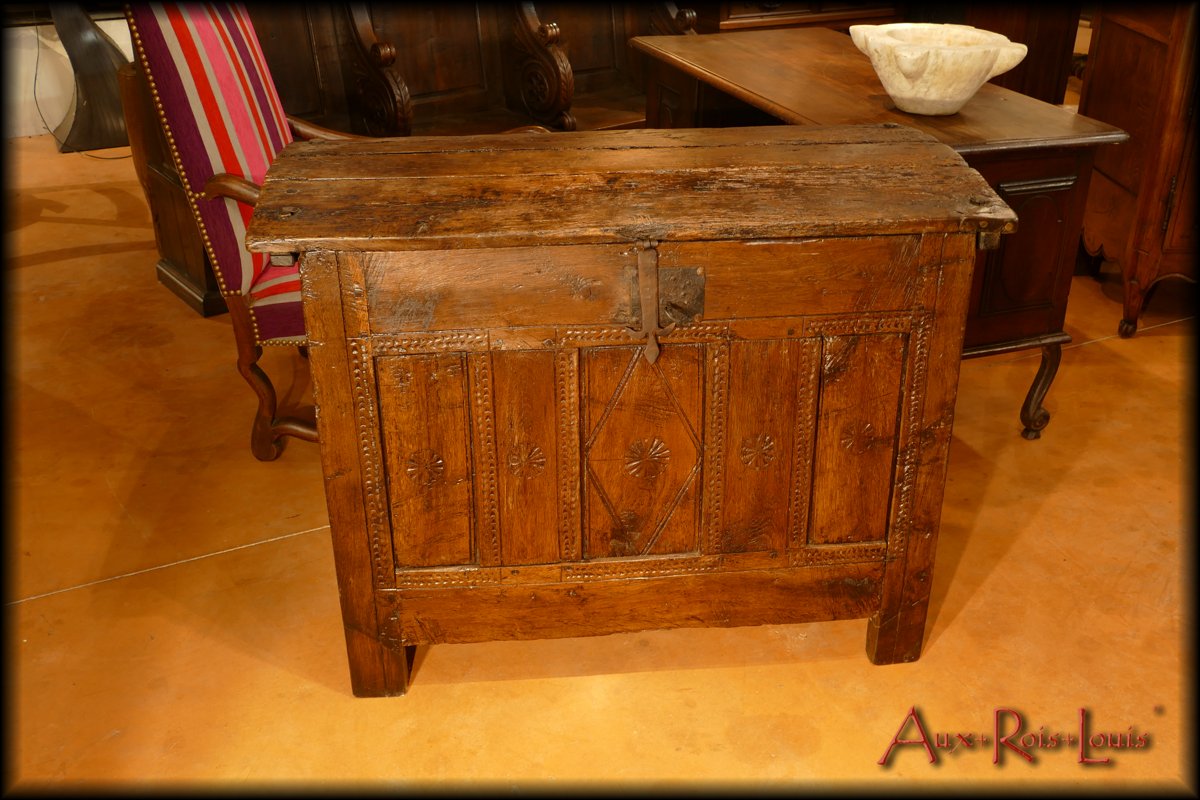
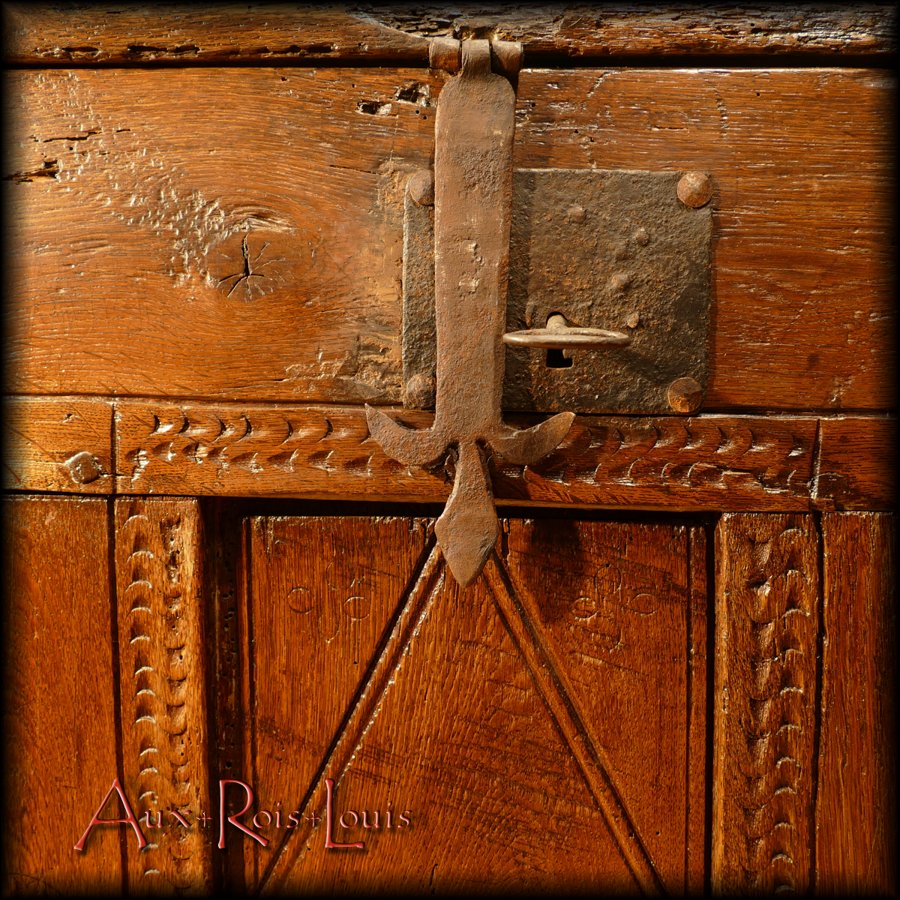
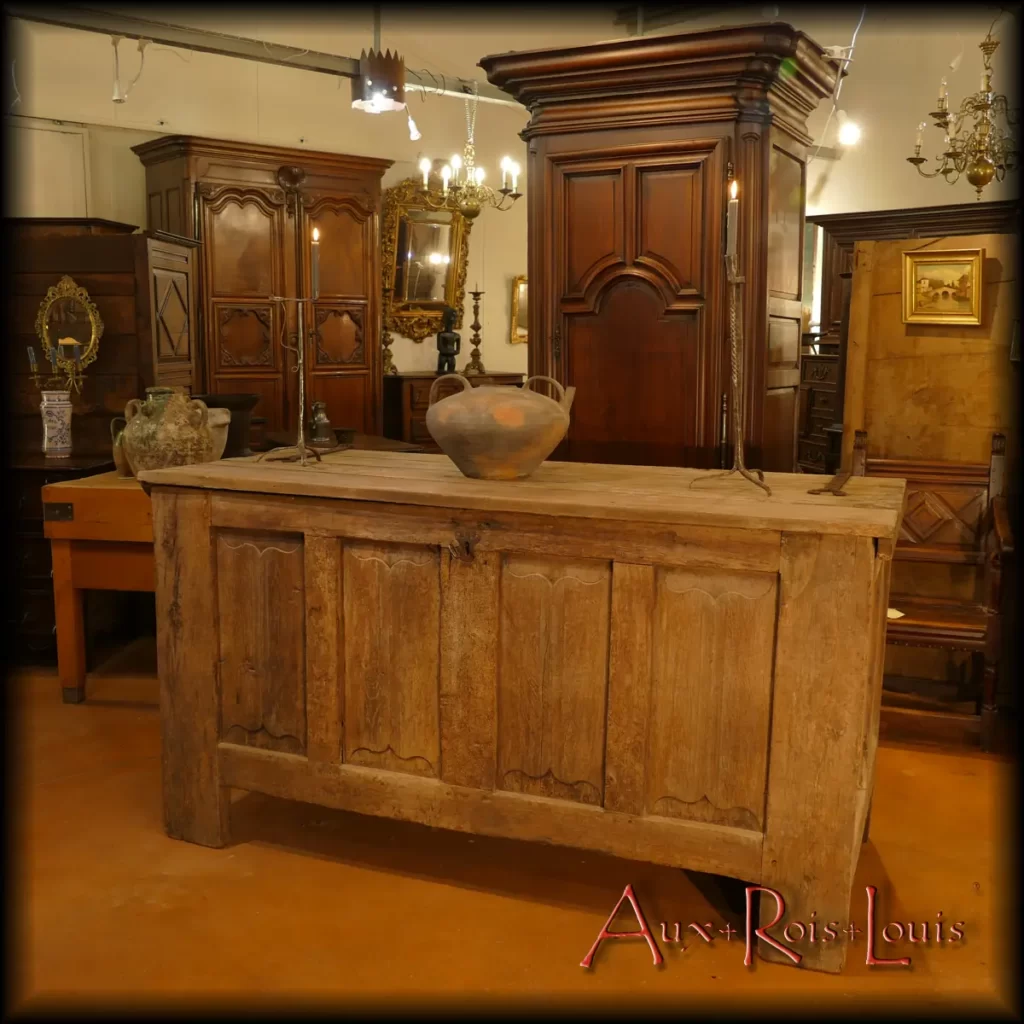
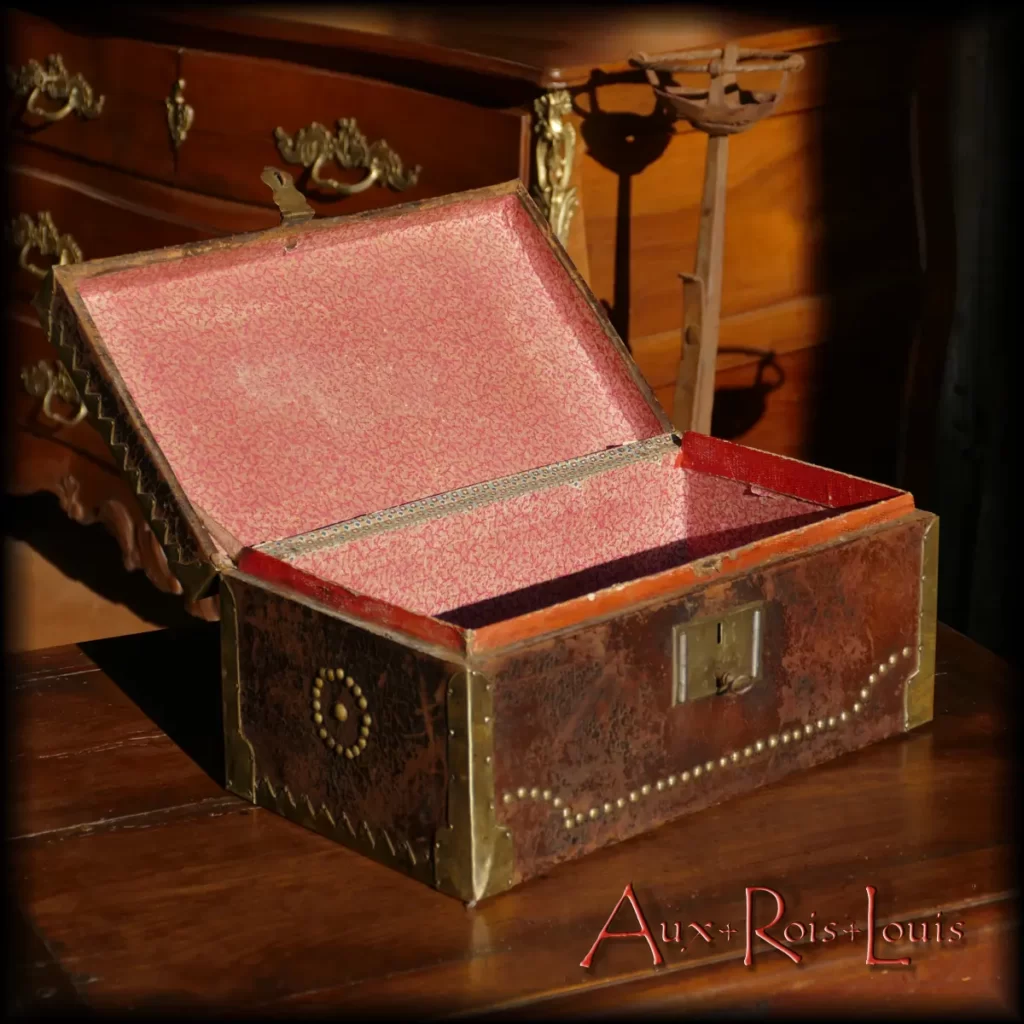
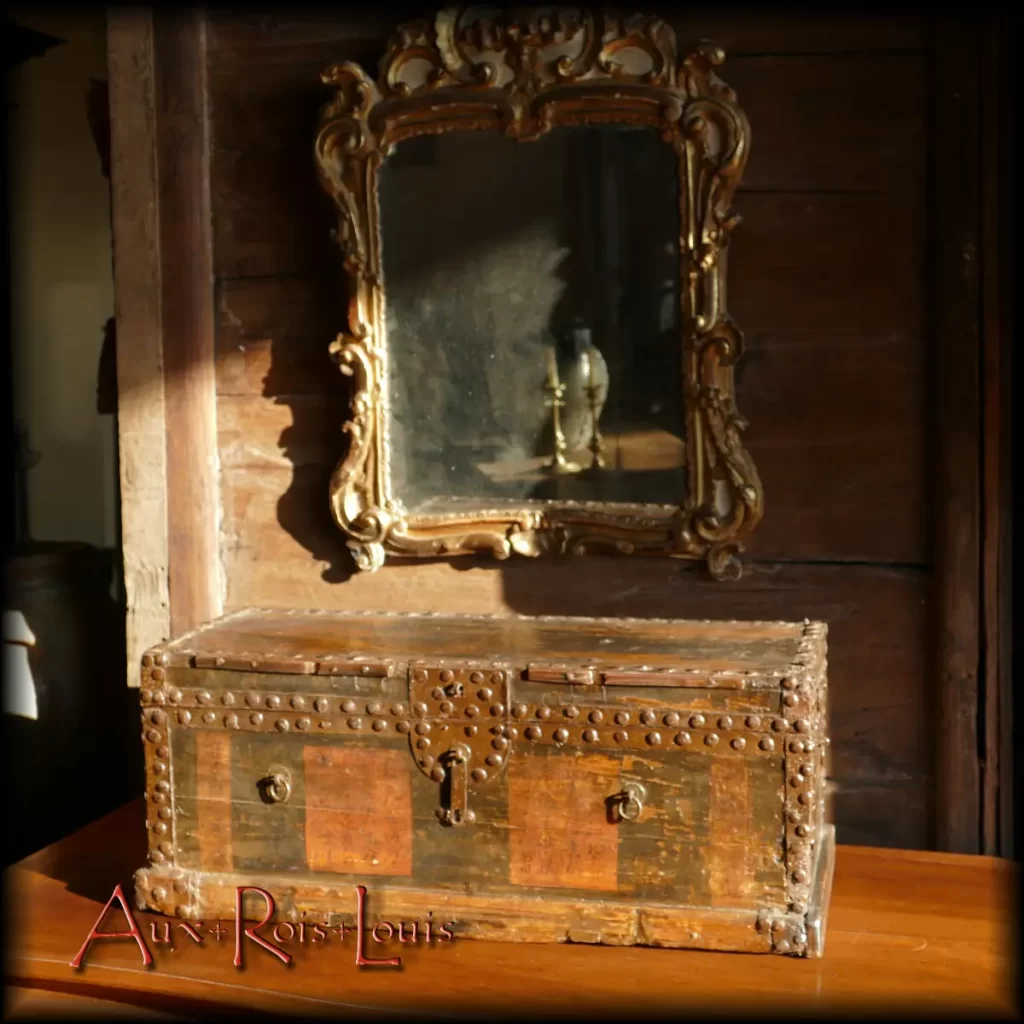
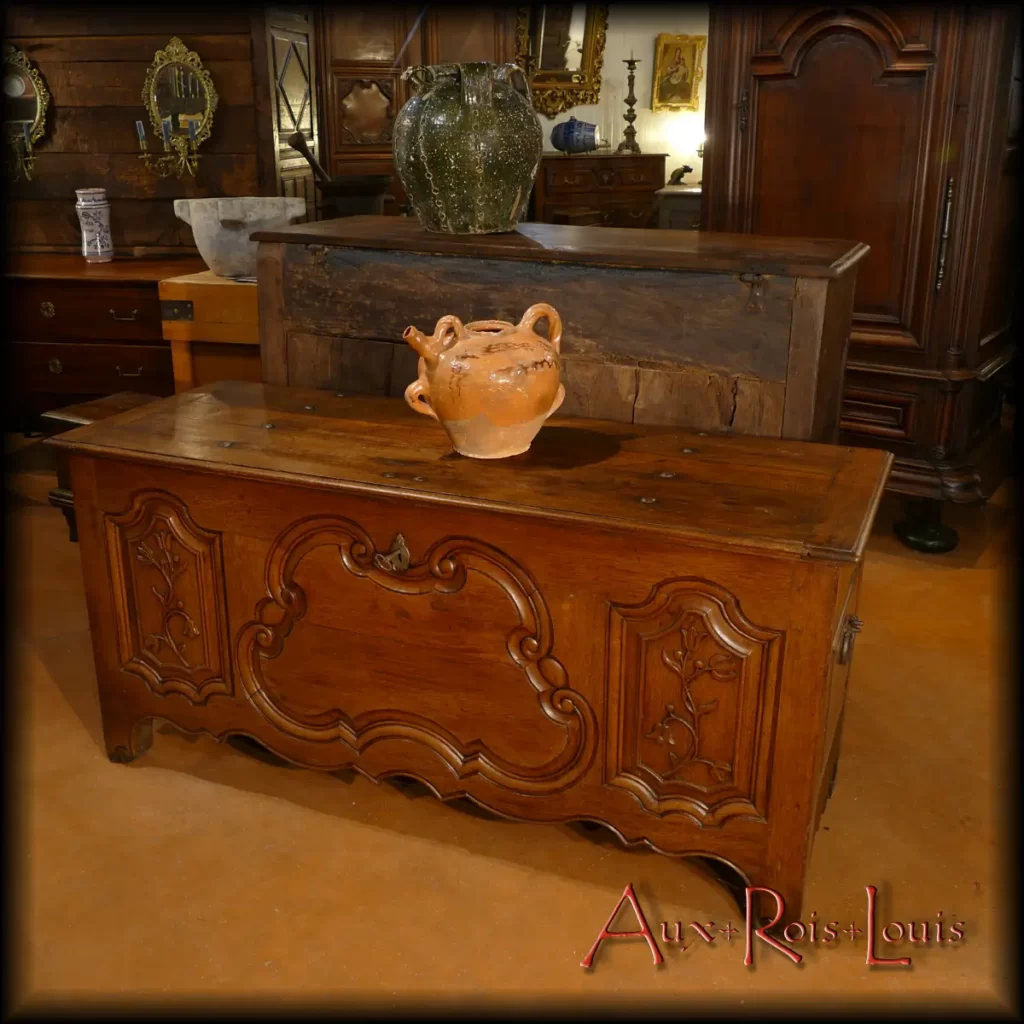
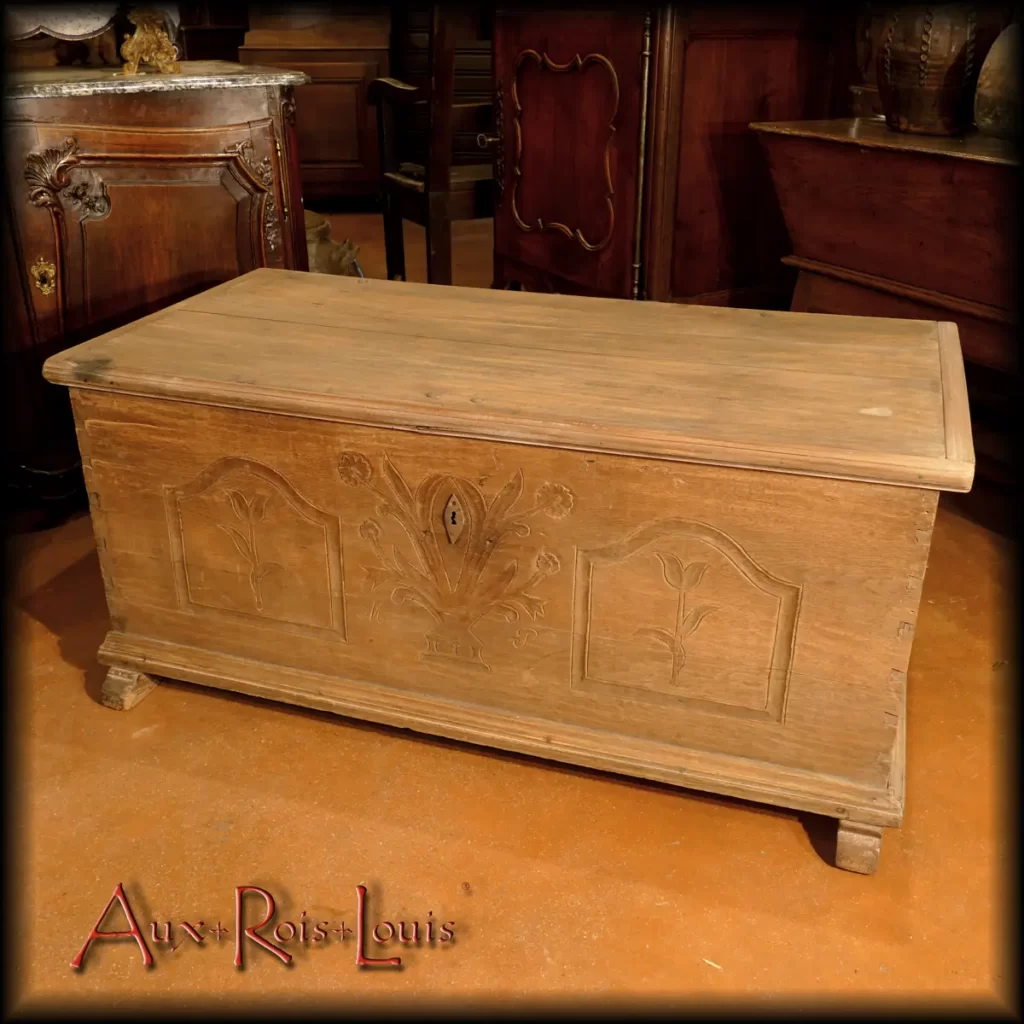
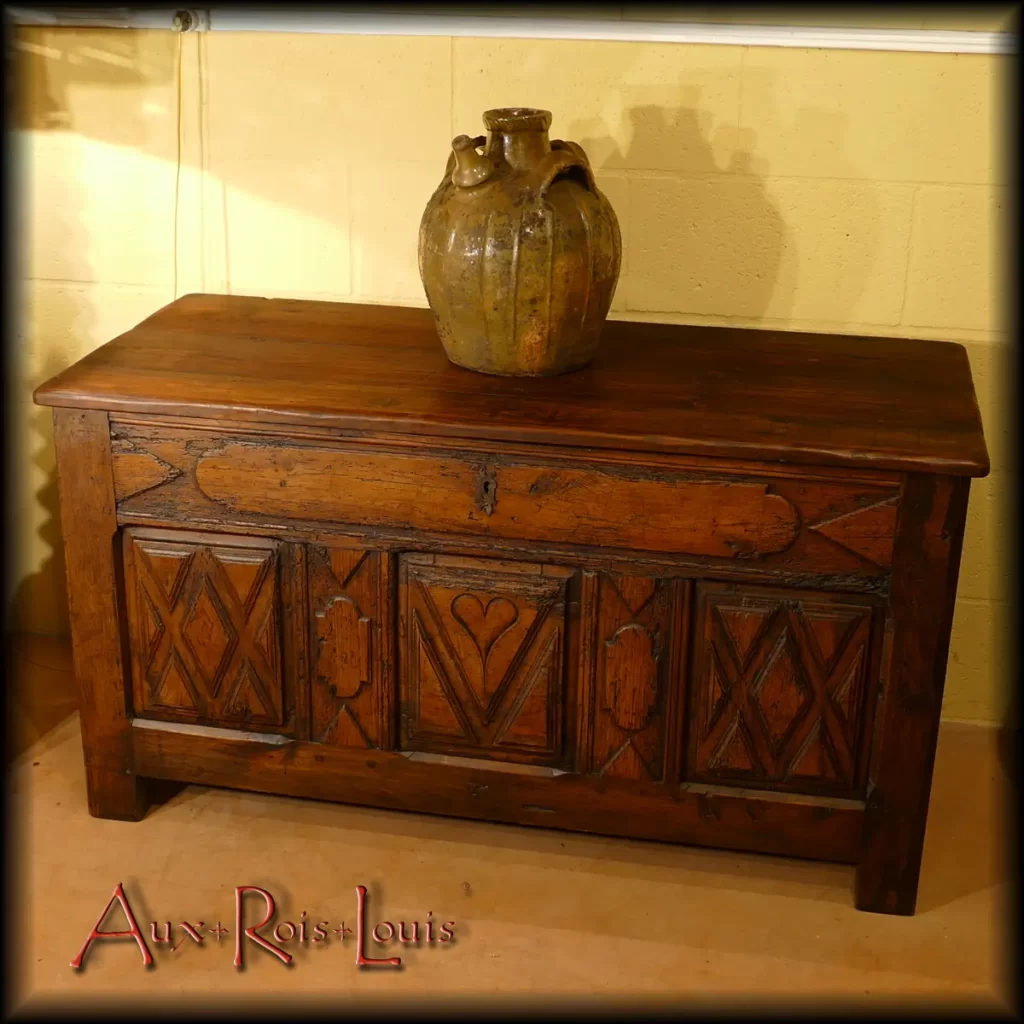
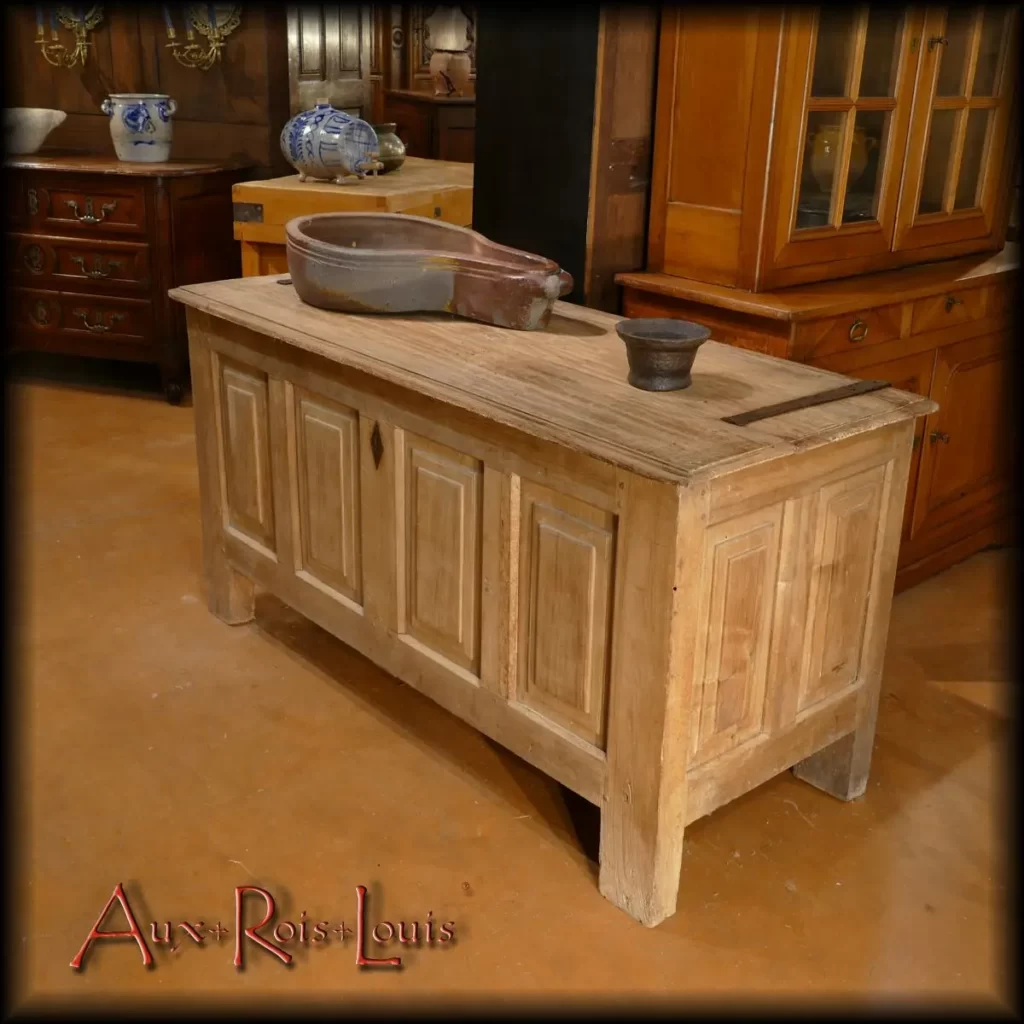
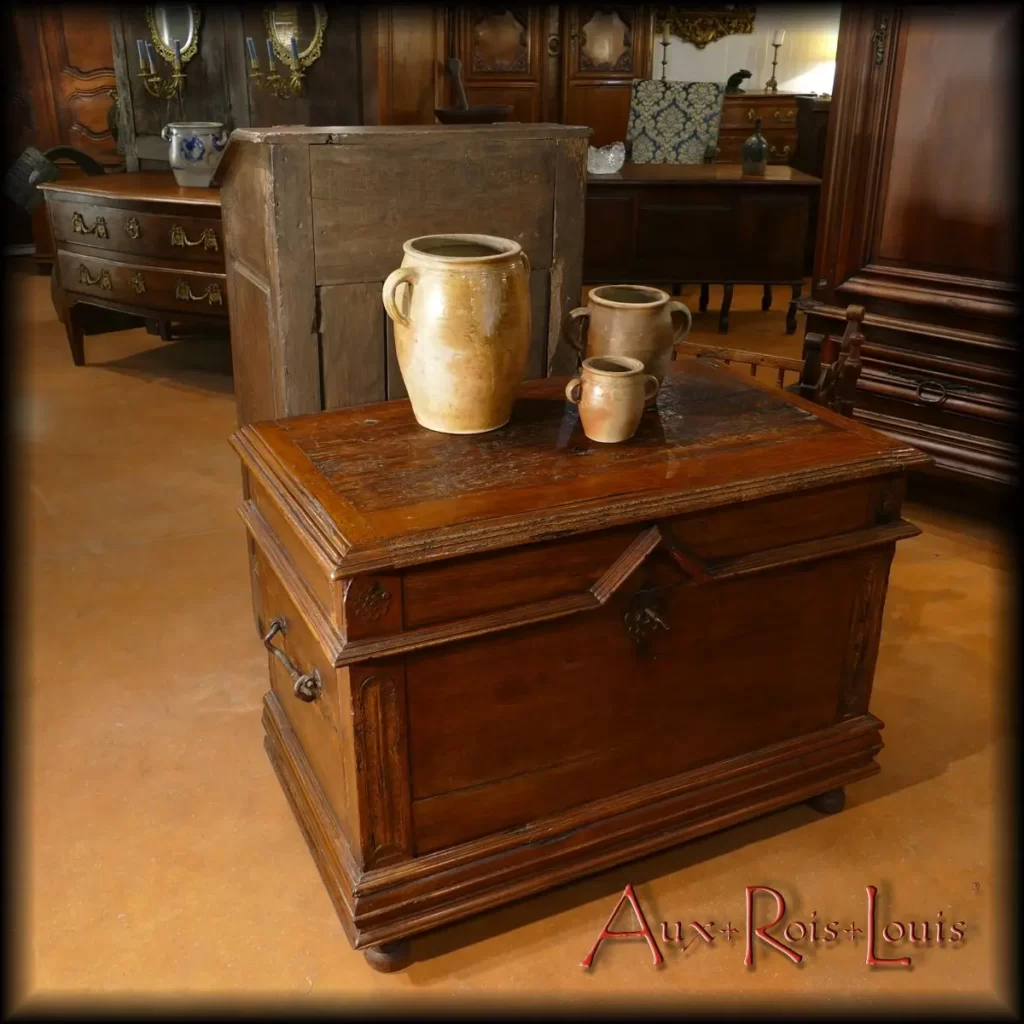
![Folk art chestnut chest – 18th century – Béarn – [MP027]](https://www.aux-rois-louis.com/wp-content/uploads/2022/02/MP027_689x800.jpg)
![Renaissance style chest in walnut - 17ᵗʰ century - Périgord - [ME051]](https://www.aux-rois-louis.com/wp-content/uploads/2021/04/ME051_P1600475.jpg)
![Walnut wood chest – 18ᵗʰ century – Bordeaux Region – [ME005]](https://www.aux-rois-louis.com/wp-content/uploads/2022/07/ME005_N04_P1350548_2.webp)
![Walnut coffer – 18ᵗʰ century – Périgord – [ME010]](https://www.aux-rois-louis.com/wp-content/uploads/2022/07/ME010_N10_P1500391.webp)